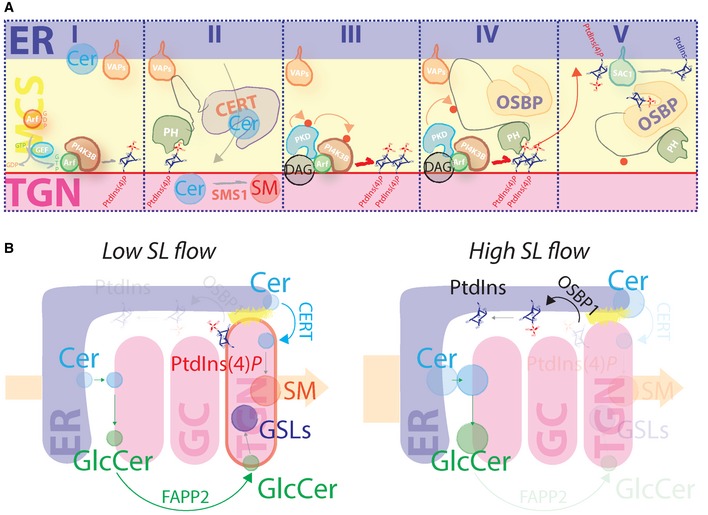Figure EV6. SL flow to the Golgi controls phosphoinositide turnover at the TGN .

- Schematic representation of SL‐controlled phosphoinositide turnover at the ER–TGN MCSs. Phase I: ARF1 recruits PI4KIIIβ to the TGN to produce PtdIns(4)P. Phase II: CERT transfers Cer from the ER to the TGN by contacting VAPs at the ER and PtdIns(4)P at the TGN. CERT‐transferred Cer is converted to SM by SMS1. Phase III: SMS1‐produced DAG recruits (together with ARF) and locally activates PKD. PKD phosphorylates itself and PI4KIIIβ to increase PtdIns(4)P production. Phase IV: OSBP1 is recruited by PtdIns(4)P. PKD phosphorylates OSBP1. Phase V: phospho‐OSBP1 efficiently transfers PtdIns(4)P to the ER for its dephosphorylation operated by Sac1.
- Schematic representation of TGN response to sustained SL flow. At low SL flow (left scheme), Cer and GlcCer are efficiently transported to the TGN by the PtdIns(4)P binding proteins CERT and FAPP2, respectively, to yield SM and complex GSLs. At high SL flow (right scheme), PtdIns(4)P is transported to the ER by OSBP1 and dephosphorylated to PtdIns. As a consequence, CERT and FAPP2 cannot deliver further SL precursors (Cer and GlcCer) to the TGN, resulting in reduced production of SM and complex GSLs.
